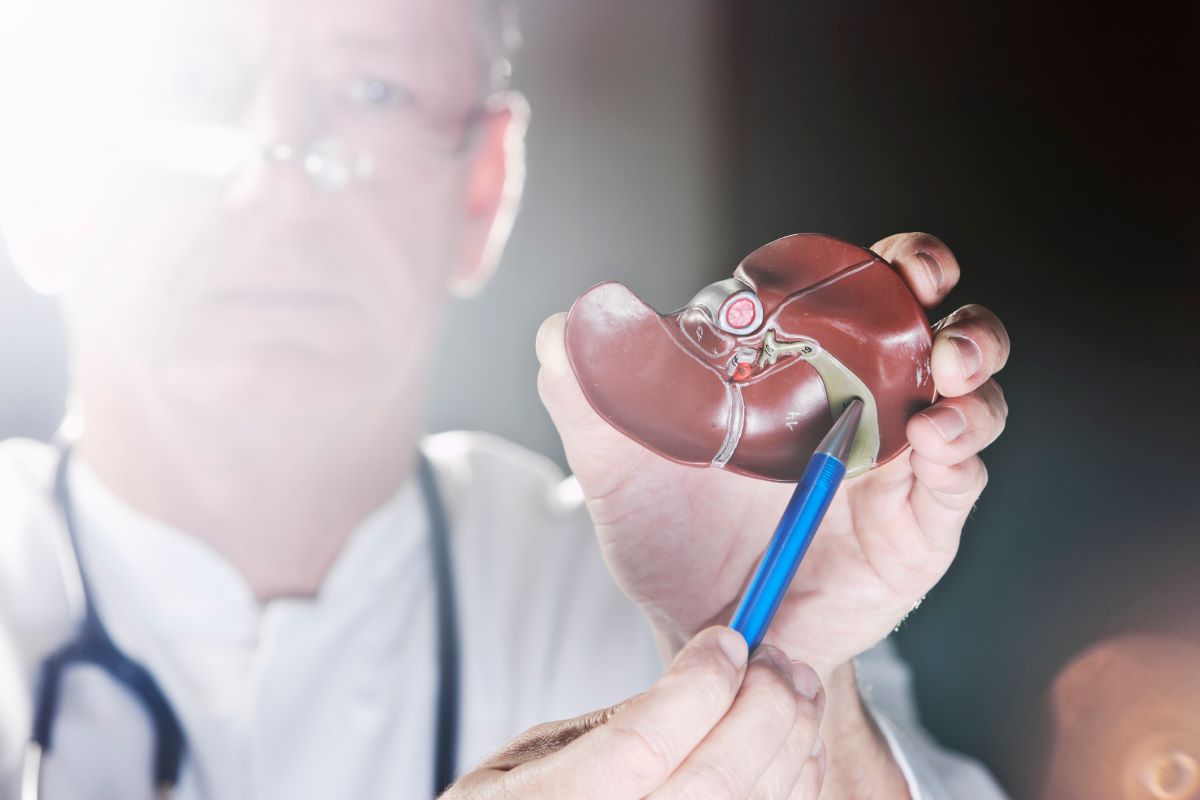
I'd like to talk to you about gallbladder disease. It's a common condition that many people experience, and as a general surgeon, I frequently encounter it in my practice. Understanding gallbladder disease is important because, while routine in some cases, if left untreated, it can lead to severe complications.
So, let's dive into what gallbladder disease is, how it affects the body and what you can do if you’re experiencing symptoms.
What is the gallbladder?
The gallbladder is a small, pear-shaped organ that lives under your liver in the upper right abdomen. Its job is to store bile, a digestive fluid produced by the liver. Bile helps break down fats and other foods during digestion. When you eat a meal, the gallbladder contracts and releases bile into the small intestine to aid in digestion.
Common gallbladder problems
Although many things can go wrong, these are three main issues that can arise with the gallbladder:
- Gallstones: These are solid deposits that form in the gallbladder. They can be made of cholesterol or bile salts and often cause pain when they block the bile duct. Gallstones are common in everyone, but more so in women. Not everyone with gallstones will experience symptoms, however. If a stone gets stuck in the bile duct, it can cause serious conditions like inflammation of the gallbladder (cholecystitis), pancreatitis (inflammation of the pancreas) or even bowel obstruction if it erodes into the intestine.
- Functional gallbladder problems: Sometimes, the gallbladder doesn't work properly. This condition is less common but can still cause significant pain similar to stones. One example is biliary dyskinesia, where the gallbladder doesn’t contract efficiently, leading to discomfort after meals. Another is hyperkinesia, where the gallbladder contracts too forcefully. Functional disorders are the reason for 2%-5% of gallbladder surgeries.
- Polyps and cancer: Polyps are outgrowths of the inner lining of the gallbladder wall. Most of these are benign and don’t cause symptoms, however, they may lead to gallbladder cancer 5% of the time. Larger polyps (those over 1 centimeter) are more likely to cause symptoms and be cancerous, which is why removing the gallbladder is recommended when polyps of this size are found.
Symptoms of gallbladder disease
The most common sign of gallbladder problems is abdominal pain, particularly in the upper right abdomen. This pain commonly radiates around the flank to the back and occurs within minutes to hours after a meal.
Other symptoms may include bloating, loss of appetite, nausea/vomiting, jaundice, darkening urine or light-colored stool/diarrhea.
Diagnosing gallbladder problems
There are several tests we can use to study the gallbladder and diagnose issues:
- CT scan: A common test used in emergency settings to assess overall abdominal complaints.
- Ultrasound: This is the most common and sensitive test for detecting gallstones and inflammation of the gallbladder.
- MRCP (magnetic resonance cholangiopancreatography): This is a contrast enhanced MRI that provides detailed, 3-D images of the biliary system and gallbladder.
- HIDA (hepatobiliary iminodiacetic acid) scan: This nuclear medicine scan shows if you have blockage of the duct causing inflammation of the gallbladder.
Treatment options
If you’re diagnosed with gallbladder disease, there are several treatment options depending on the severity of your condition:
- Medications: There are some medications, like ursodiol, that can help dissolve gallstones, but they’re generally ineffective. They can take months or years to work, if successful, and there is a high chance of having gallstones again in five years. These are not recommended.
- Cholecystostomy tube: In patients who are too ill to undergo surgery, a temporary solution is to place a tube in the gallbladder to drain bile. This is a short-term fix until the patient is healthy enough for surgery.
- ERCP (endoscopic retrograde cholangiopancreatography): In cases where stones escape the gallbladder and get stuck further down the bile duct, they can be difficult to remove with surgery, so we rely on our gastroenterology colleagues to fish them out via a scope in the mouth.
- Surgery (cholecystectomy): This is the most common treatment for gallbladder disease. It is also one of the most common surgeries performed in the U.S. each year. We typically perform this surgery using minimally invasive techniques, like laparoscopy or robotic surgery, which means smaller incisions, less pain and a faster recovery time.
Life after gallbladder removal
You can live a normal life without your gallbladder. Once it’s removed, bile flows directly from your liver into your small intestine and, while some people may notice minor digestive changes, most adapt well over time.
Gallbladder disease is manageable and, the sooner we address the issue, the better your outcome will be. If you think you’re experiencing symptoms of gallbladder problems, don’t hesitate to seek medical advice. Early diagnosis and treatment can prevent complications and improve your quality of life.
Learn more about general surgery at Northside and find a surgeon near you.

